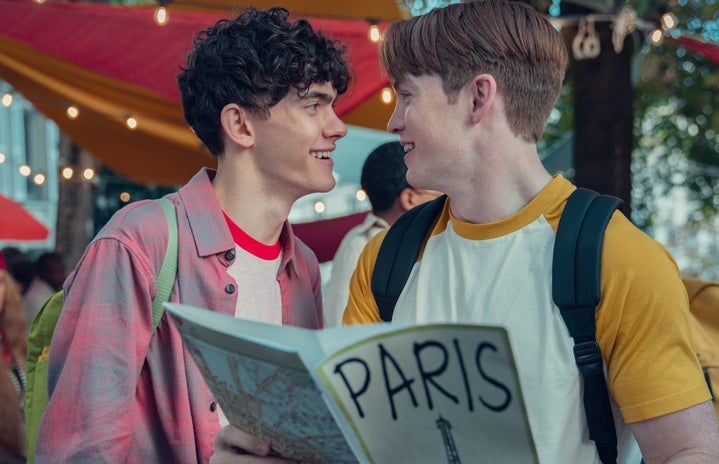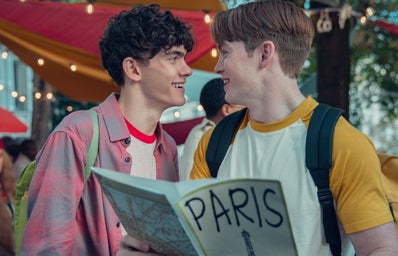This past August Heartstopper aired its second season and, like many of its other devoted fans, I raced to stream the show as quickly as I could. I’ve read the Heartstopper comics and its spin-off novels, so I was eagerly awaiting this new season. Since I had read the graphic novels, I was already aware that this season would be significantly heavier in storyline and themes than its more light-hearted first season, but I was ready to see how the show would explore it.
While both seasons address the homophobia and the bullying the characters face, this season covered more layers of homophobia for many of the characters , instead of only focusing on the bullying that Charlie Spring, the main character, experienced before the timeline of the show. We see Nick Nelson struggle with coming out and the fear of losing friends because of his queerness. We see Darcy’s difficult life at home because her mother doesn’t accept her. We see Ben’s inability to fully accept his own queerness because of his internalized homophobia. We see Isaac’s frustration over not understanding why he can’t develop a crush the same way his friends do. We see many different aspects of the same problem, and my heart aches at how they think they need to go through it alone.The artistic elements used in this show to depict these themes. An example of this is with the rainbow ocean that Ben runs away from. Another example is when physical sparks are shown on screen when Nick and Charlie touch pinkies. This is one of the most unique and special parts of this show. It emotionally carries Heartstopper in a way that I have not seen before in film. It has the power to warm my heart, as well as break it. In diving into the complex lives of queer people and their experiences with coming out as deeply as the show does in its second season, the artistic elements greatly aid this endeavor in creating a fantastic follow up to a beloved first season. Personally, one of the most heartwarming things I took from Nick’s particular struggle is his family and friends assuring him that he doesn’t owe coming out to anyone. He gets to come out on his own time unlike, ironically, the actor behind Nick Nelson, Kit Connor, and unlike the show’s main character, Charlie Spring. There is a wealth of self discovery and representation for many sexualities that is presented in such a fun and loving way. It would be a shame for anyone to miss out on the show that is Heartstopper. It’s a show that we need and it’s a show that hopefully sets a trend for more shows like it.


